 |
 |
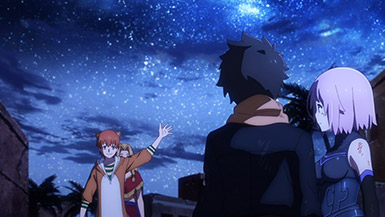 |
 |
 |
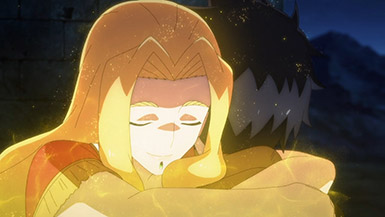 |
 |
 |
 |
 |
 |
 |
 |
 |
 |
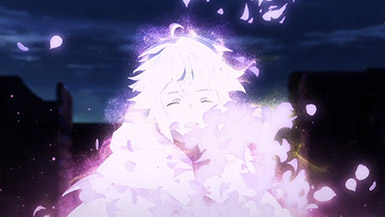 |
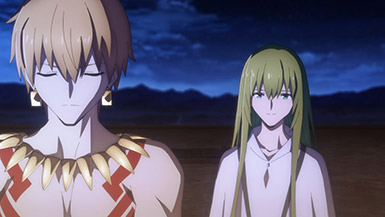 |
 |
 |
 |
 |
 |
 |
 |
 |
 |
 |
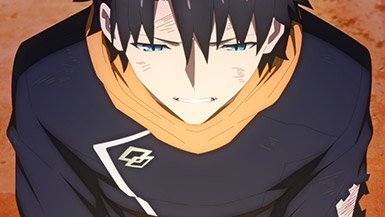 |
 |
 |
 |
 |
 |
 |
 |
 |
 |
 |
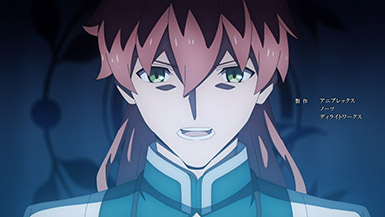 |
「Grand Order」
This episode? It was for Nasu.
In the game, the Babylonia arc didn’t have an extended epilogue like this one. It didn’t actually need that much of an epilogue; most of the cast were, by then, dead or gone and in any case the end of Babylonia basically lead straight into Solomon (as it did later in this episode as well). From a pure storytelling perspective, there’s not not much to do other than say some goodbyes and be swept away by the next call to adventure; there certainly would normally be no need for a full episode for that.
But this is Nasu “Let Me Explain in Detail” Kinoko, so maybe we should actually be surprised that the production staff actually managed to fit all his words into 20 minutes. Nasu especially loves revisiting old characters and playing around with them (canon be damned), so with this anime adaptation giving him an excuse to revisit Babylonia you just knew he wouldn’t be able to resist. And the three in this episode were arguably the most worthy ones: Quetzalcoatl had a tendency to get overshadowed by the other goddesses, Merlin is basically the author mouthpiece, and Gilgamesh is a character Nasu had been developing continuously since Fate/stay night. Gilgamesh, especially, could do well with a big Nasu speech, mostly because Seki Tomokazu is so good, but also because this anime adaptation basically made Babylonia all about him while turning him into a metaphor for humanity. It’s only natural that he gets to deliver our Aesop at the end and pin the medal on our heroes, so to speak.
On my part I feel that Babylonia talks too much already so I don’t consider this episode necessary at all. Treat it as an indulgence for Nasu and a drama CD with bonus visuals for the rest of us. There’s only one thing we’ll take away from it anyway: Temple of Time, Solomon adaptation is confirmed! And with that, let’s jump to the final impressions.
Final Impressions
I don’t really think it’s appropriate to give ‘final impressions’, actually, since this arc of Fate/Grand Order will not be finalised without the final chapter i.e. Solomon. But I’ll share some of my feelings on the adaptation, on top of what I’ve already said in these weekly posts.
When people talk about ‘fanservice anime’ they’re often referring to ecchi harem rom-coms featuring characters with loose dress codes. To me, though, a fanservice anime is more accurately an anime like Fate/Grand Order: Babylonia. And I’m not talking about Mash’s delicious booty mugging the camera in the name of The Cause (not that we should ever understate her enthusiastic efforts). No, I’m talking about how Babylonia was literally a service for the fans. It’s essentially a passion projected, made to celebrate the game’s anniversary and voted for by the fanbase. It knows precisely its target audience and would not have existed without them.
I’ve talked about these kinds of fanservice anime before (a fair number of of video game adaptations fall into this category, actually) and I generally don’t approve of them. To put on my elitist anime critic hat (and elitist critic monocle) for a minute, the sad truth is that most fans have no idea what makes a good anime. Pandering to them more often than not compromises the quality of the work. And there’s often little need to do so overtly. While a non-zero portion of any fanbase will be drooling degenerates who cannot be satisfied without excessive pandering and virgin sacrifices, I choose to believe, despite my innate cynicism, that the majority will appreciate simply a good anime based on the IP. I think the production staff of Babylonia understood this, and tried to make an anime that appealed not just to FGO players but also to the wider anime audience.
The problem is that Babylonia has fanservice baked into its DNA. If you’re not a Fate fan you’re not going to understand this bloody thing. This is on top of the fact that this is the second-to-last chapter of the story, meaning that there’s just tonnes of missing information that an anime-only viewer will not have — and may not even know that they don’t have. While this adaptation didn’t have the time to recap all of the previous chapters and eventually gave up on doing so (who’s this armoured skull guy? If you don’t know, too bad!) they did make an effort to balance the needs of new viewers and existing fans. Hence the long periods of setup and the hefty exposition dumps, all in the name of making sure everybody was on the same page.
Of course, existing fans have no desire nor need for any setup. They just want to see their favourite scenes given voice and animation. So the end result of the anime, I fear, is that this adaptation, in its quest to satisfy all demographics, will ultimately fully satisfy none. New viewers will not be getting a ‘definitive’ FGO experience, coming into the story anachronistically and without full context, and fans will have to deal with a relatively top heavy anime that spends more time talking than being awesome.
It’s a difficult and unenviable task that the production staff were sadddled with, especially considering the source material. How to adapt to adnimation a story based on abstract fantasy ideas told in abstract visual novel segments punctuated by gameplay with abstract turn-based RPG mechanics? Which is why, considering what the staff had to work with, I think this anime was, at the very least, good enough. And to give it proper credit, when it was good it was really good. If nothing else (and there really should be plenty else) the animation, the movement, was at times incredible. This is what next generation animation looks like, with computers allowing for the kinds of movement that is difficult to conceptualise as frames (incidentally creating all kinds of headaches for those taking screenshots).
Whether you were satisfied or not, though, we can look forward to Solomon! For those of you who have been experiencing FGO only through anime and intend to continue with Solomon, I recommend looking up the other chapters first (I’m sure they’re on YouTube somewhere). The final chapter is, as one might expect, a culmination of all the other chapters and will lack impact without them. And of course, there’s also the Camelot movie, and Heaven’s Feel III. It’s a good time to be a Fate/ fan right now, whether old or new.

Also, if some Writer need Location Inspiration for Babylon or older settings. Try to use this:
https://cdn.prod.www.spiegel.de/images/0a339dbc-0001-0004-0000-000001026197_w718_r1.0596026490066226_fpx42.38_fpy44.91.jpg
Eye of Horus in the Desert (Also if you use Google Maps for it, try to Zoom out for this)
https://upload.wikimedia.org/wikipedia/commons/thumb/a/a2/Eye_of_Ra.svg/1200px-Eye_of_Ra.svg.png
(The surroundings has a similar look, right?)
https://www.google.com/maps/d/u/0/viewer?ll=20.910761628759968%2C-9.940617396537846&spn=0.252029%2C0.449066&msa=0&mid=1AHjKzKQTXIb51Q5B26DdAFv5V6I&z=8
You can see the Eyebrow?
Yeah, I think the fanservice was the root of most problems in this adaptation.
While it did the best it could, and at its best was really glorious, there are hurdles that are almost impossible to overcome. Starting a story almost at its end, not having room to spoil too many things about past events (because some, like Camelot, will be adapted eventually) or to play with the protagonist… It’s not easy.
Interestingly, almost at the same time I was watching this, I decided to finally give the much praised Fate/Zero a chance. The difference was stark. While catering to the long-time fan, Zero was also written to introduce newcomers to the concepts, characters and setting of the Holy Grail Wars. Babylonia tried with its Episode 0 (actually my favorite of the bunch), but it wasn’t the same.
Mind you, I also see a devious logic with that. It’s not just fanservice; I’m a perfect example that presenting things in such a way can motivate people to play the game. It is often said that many anime adaptations are giant commercials for the source material, and Babylonia may be one of its most triumphant examples.
This was certainly entertaining. Satisfaction was mixed though. Familiar enough with the Fate franchise, watched that other FGO show but never really touched the FGO game. Not too fond of the original Gil, but I could get behind the one shown here. I think they did enough in that regard. But reading your previous reviews, I think they could have done more.
Production wise I think the did great. Animation and audio was mostly good. Rate them very highly. In fact, instead of Mash’s booty, I’m more interested in what’s a little bit lower. The way they draw her boots is way better than any official artwork I’ve seen. Both 2d and 3d.
Guess it’s time to wait for Solomon. This final episode doesn’t really feel like an epilogue and the previous episode was the finale that didn’t really feel like one either. They got it done by the numbers but I think there’s still something missing. Can’t put my finger on it though.
So what happen to Ishtar why did she not disappear?
Because she was summoned by the People of Uruk, not by the singularity’s grail or by any master like the other servants. I guess She will stay there up to the end of the age of gods.
Something I was hoping would be mentioned in the anime, as Nasu explained it on his blog way back in the past(of course) is that if something is improbable enough in a Singularity, the timeline will be unable to compensate for the massive changes and just pretends none of it happened.
This is first explained with Camelots main villain, who appearing in that Singularity was such an improbability everything from their appearance onwards is undone.
With Tiamat, the damage caused by the Alliance she summoned will remain and be corrected by the timeline to be killed by other things, but Tiamat awakening and the Lahmu will be undone.
I don’t feel like fanservice was that big of an issue here. I mean I think fate either takes itself too seriously or not seriously enough. Too much fanservice would be Prisma Illya, though I did enjoy the series overall I also spent a lot of time fast-forwarding. Too serious would be Fate Zero… I feel like Zero pretty much sums up the series. Pointless struggle in the end, no satisfaction for the viewer, just basically a betting game for who dies. Or a fun drinking game if you want to drink everytime he fucks everyone over including himself.
So for me this was a nice middleground. We’ve seen it a million times there’s only so serious you can be but it was also a sufficiently unique format that kept my attention. Also I haven’t seen any of the other “missing” works and got along just fine in terms of understanding the story
My main takeaway as FGO player is that while the way they spinned the overall narrative felt a bit lacking and couldn’t reproduce what I felt when playing through the game with boring self insert protagonist Fujimura contributing to that, it still did an all right job. What made this series for me so enjoyable were all those Servant moments. “Fanservice” indeed.
Loved the Ishtar recruiting (feet!) and Eresh night visits.
Animation wise the series was pretty spectacular. Considering how many times I rewatched Ishtar’s and Quetz’s NPs, I can’t say that I’m too disappointed.
Good job, CloverWorks.